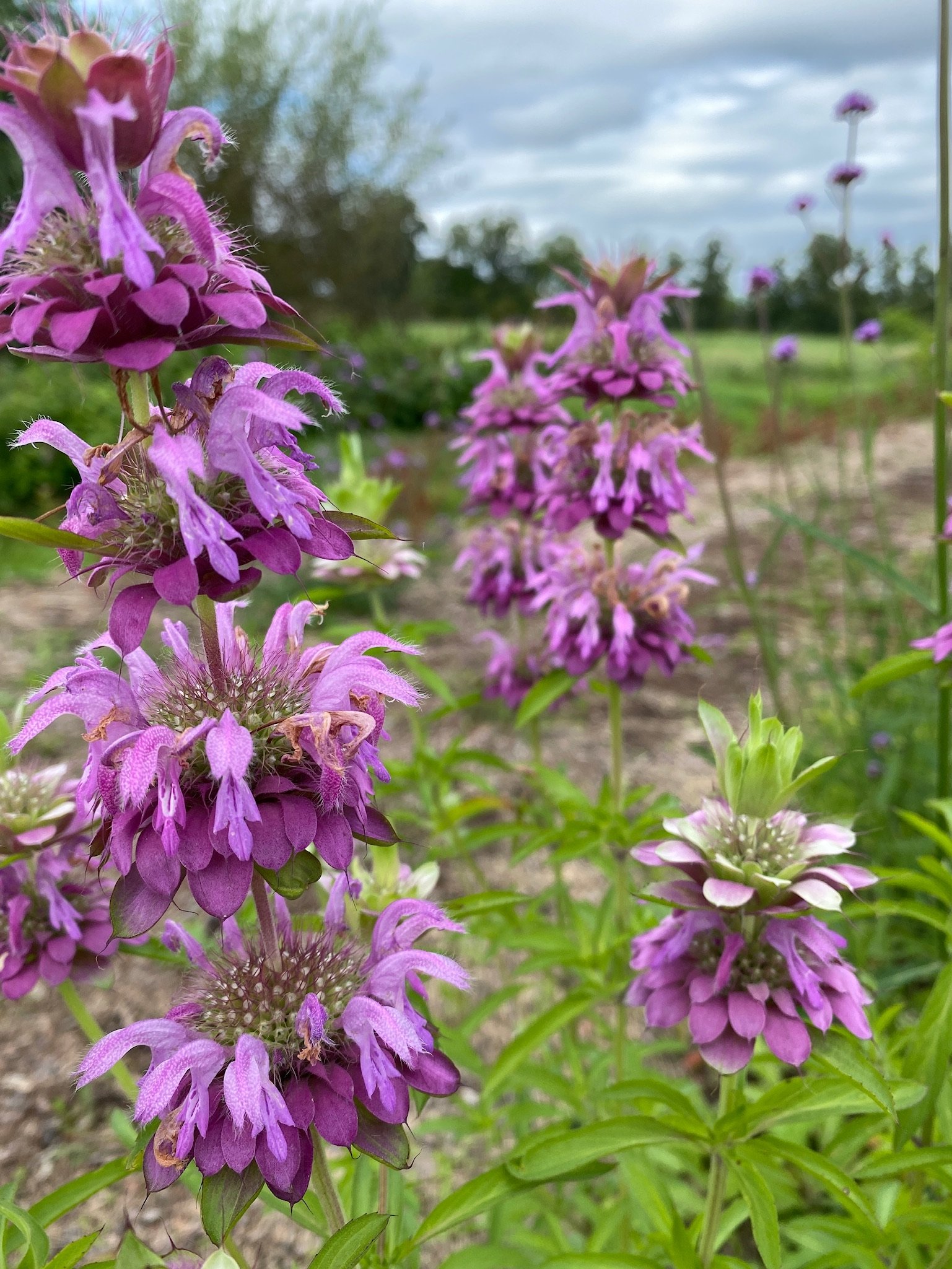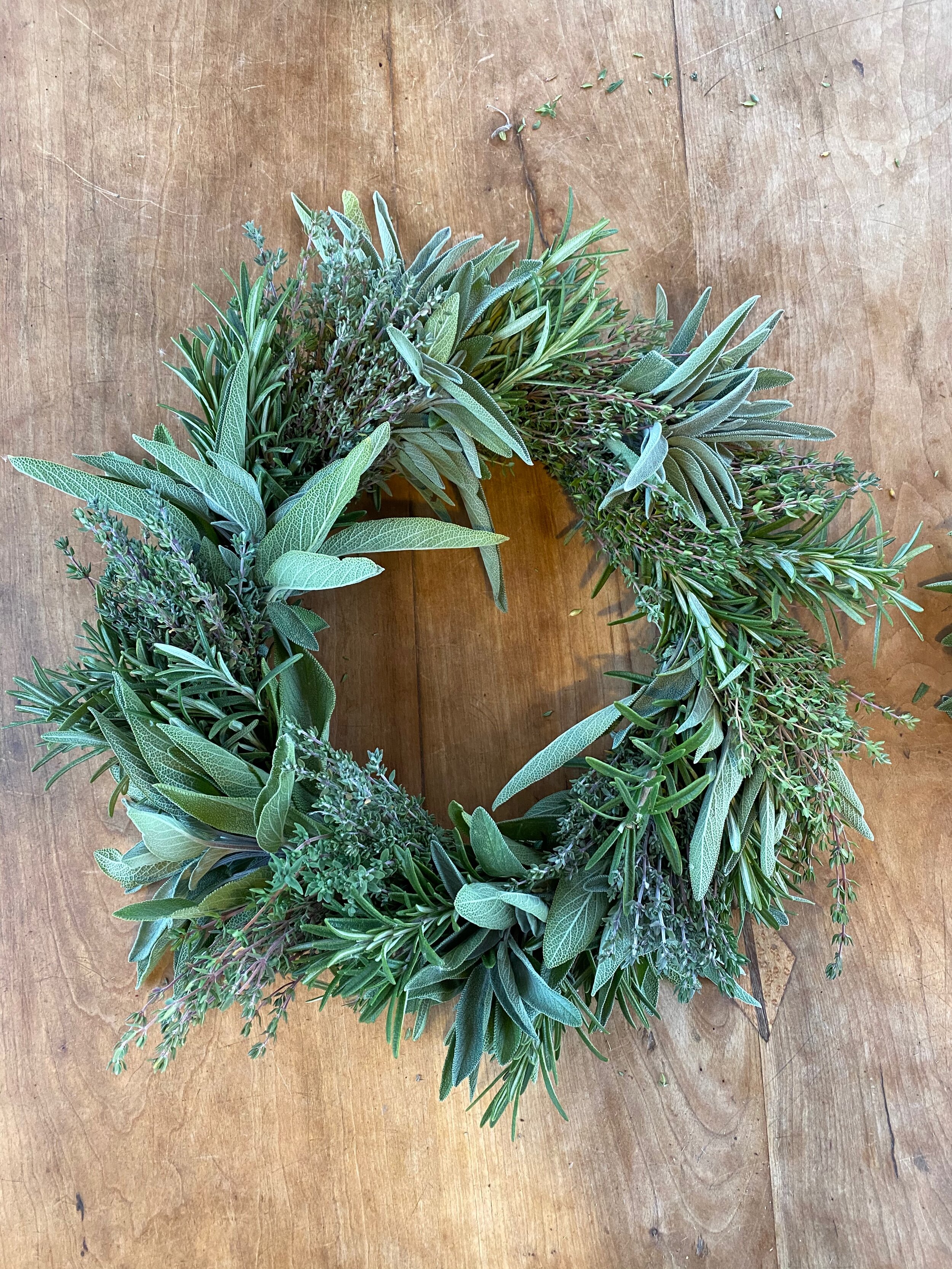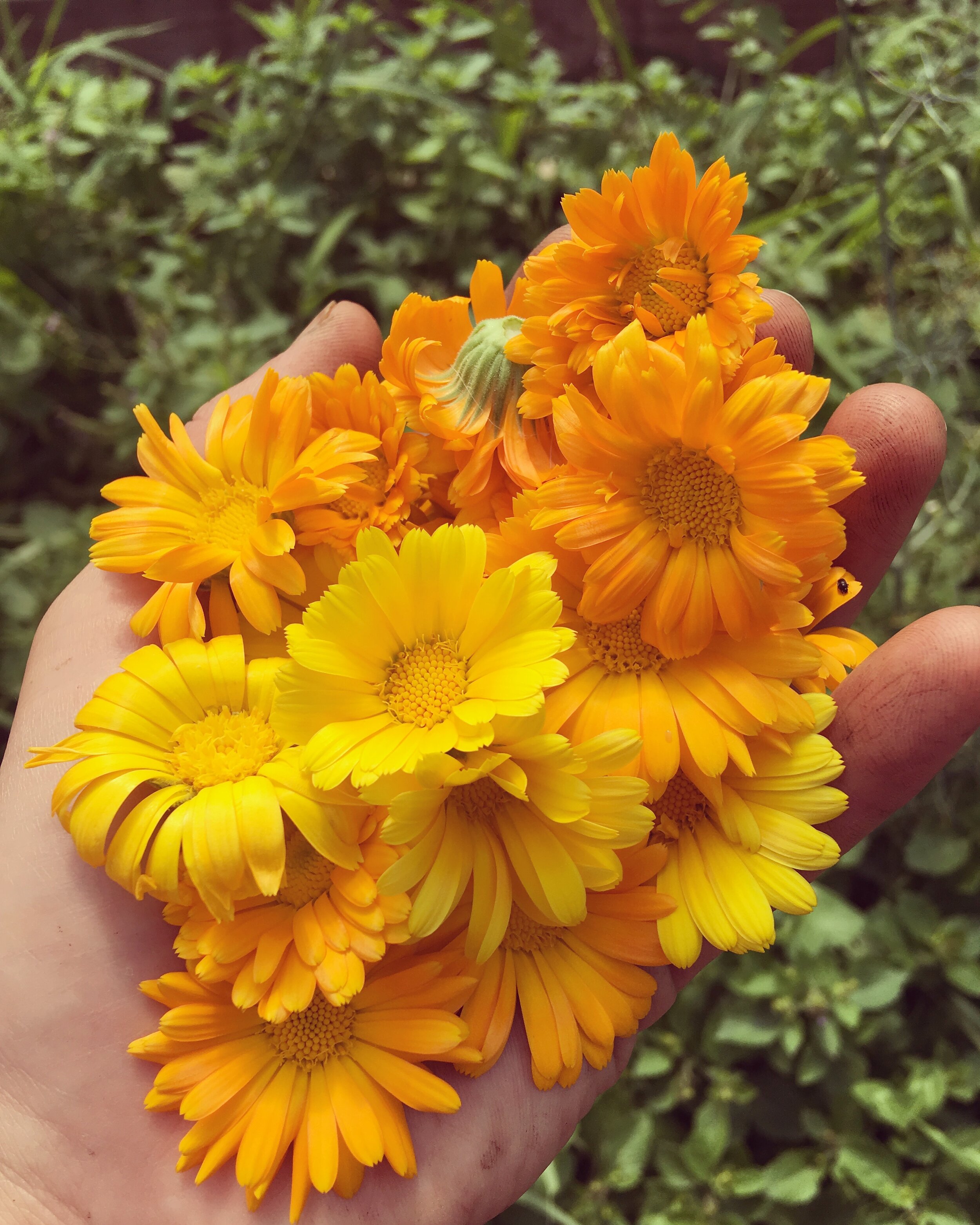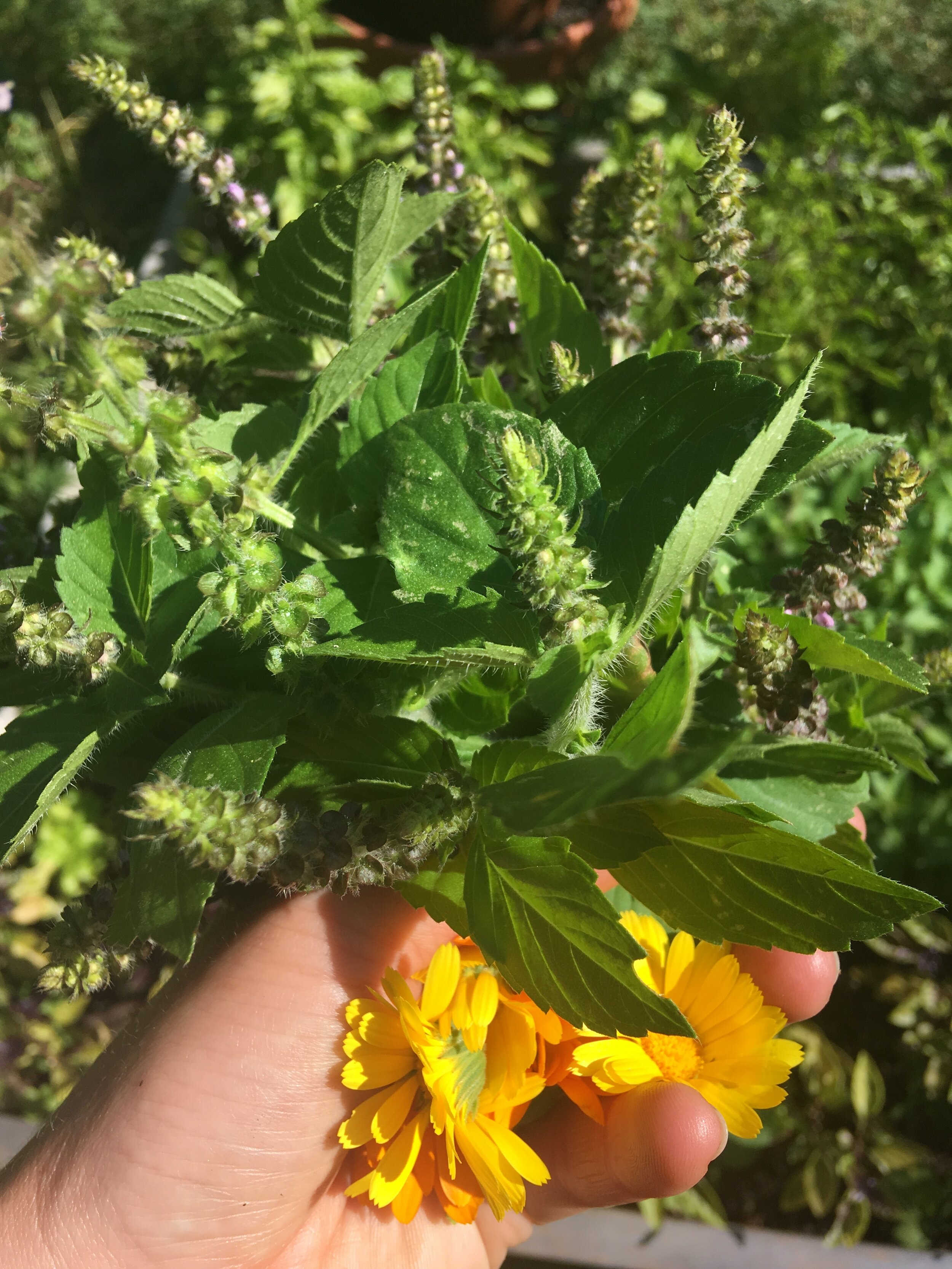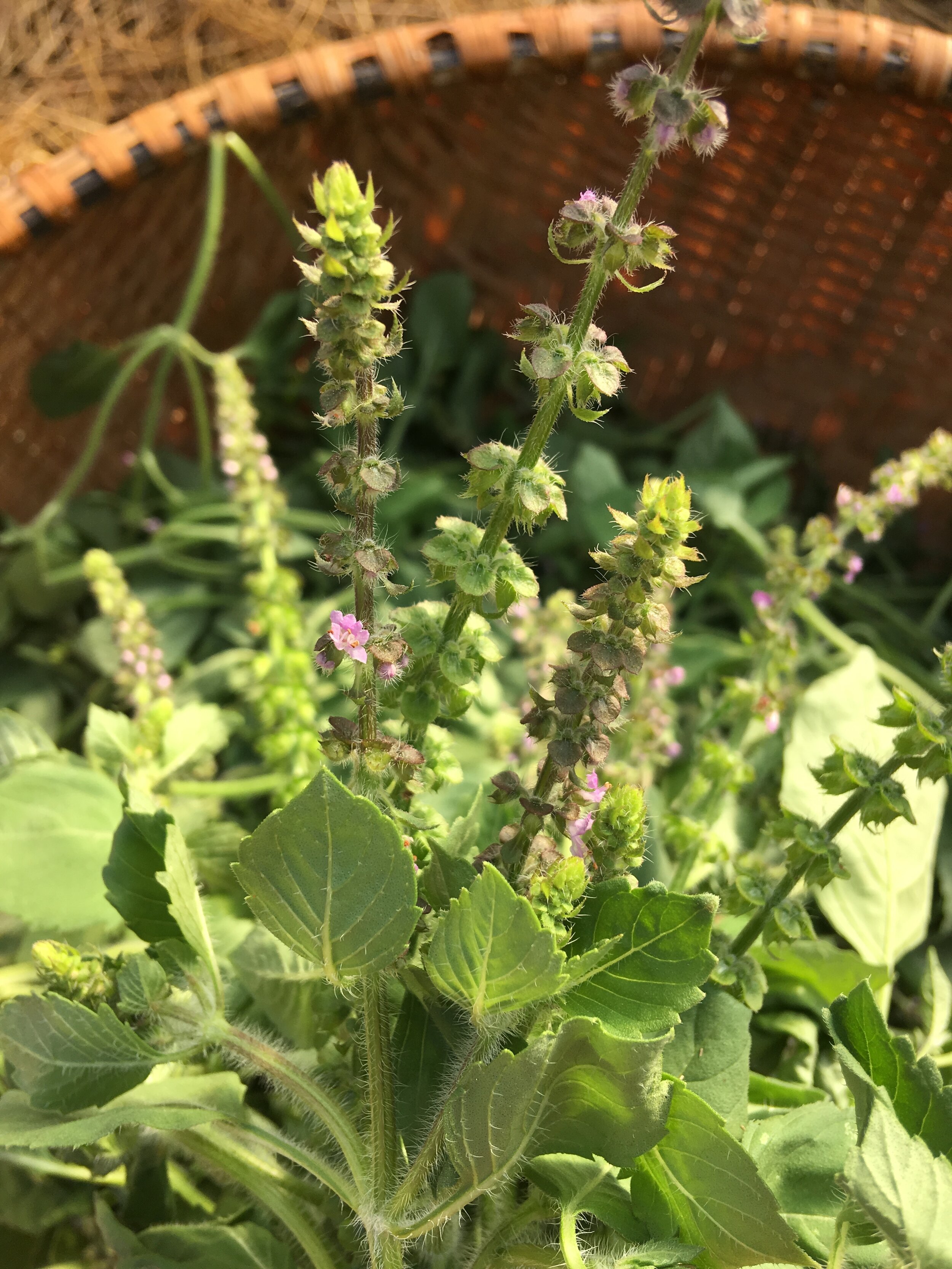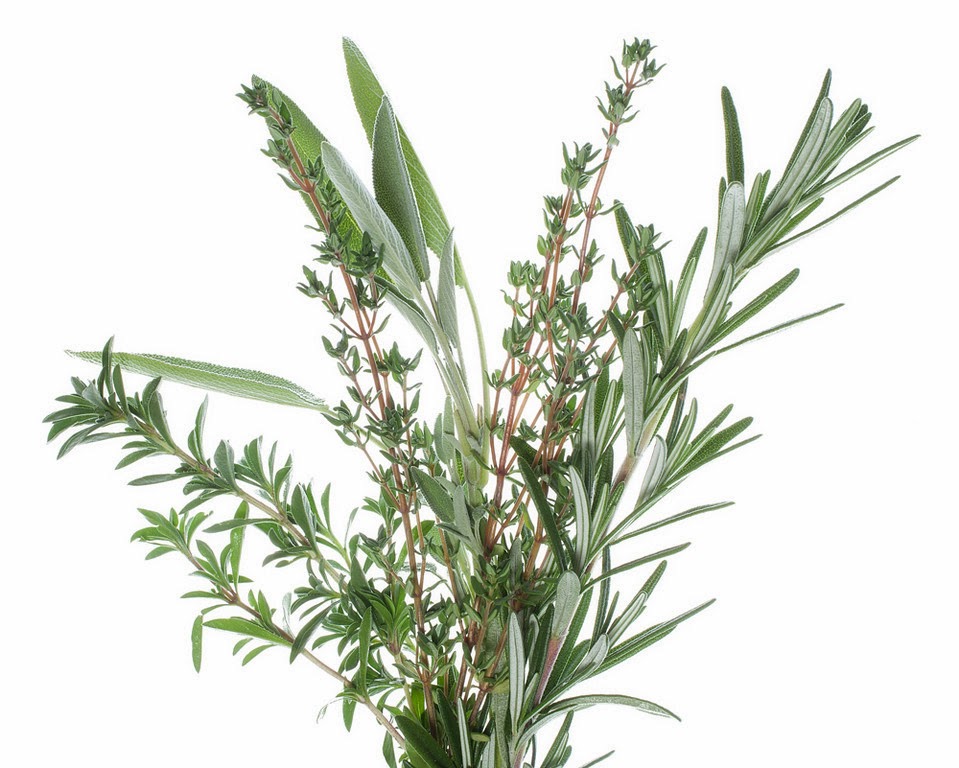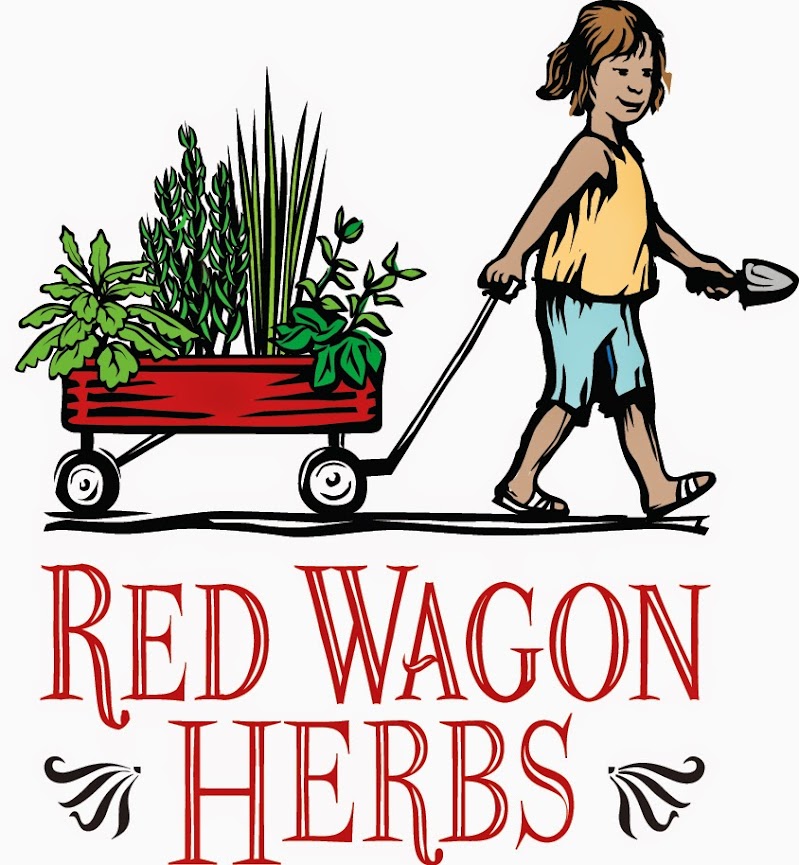Lemon bergamot
If you wander through the herb section of our greenhouse, you’ll notice quite a few plants with “lemon” in their name. While their aromas and flavors differ slightly, these herbs all offer a bright, citrusy scent that will perfume the herb garden as well as your kitchen.
Many of these lemony herbs are actually in the mint family (Lamiaceae), a group of plants already well known for their diverse and potent aromas, thanks to high concentrations of volatile oils that are encased in bubble-like trichomes on the leaves and flowers. When the leaves are rubbed or dropped into hot water the trichomes open up, offering the heady aromas and flavors we have come to love.
Lemon balm (Melissa officinalis) is a beloved herbal remedy that is as tasty as it is healing (we love it so much we already wrote a whole blog post about it). The plant itself is a mounding perennial that grows about two feet high and up to three feet wide. Harvesting the leaves for fresh or dry tea will also help this plant keep its shape.
In the kitchen garden, lemon basil and lemon thyme are indispensable. At Red Wagon, we love layering piles of fresh lemon basil underneath a chicken before grilling or roasting it. And lemon thyme is fabulous both fresh and dried. Crumble the dried leaves into soups, rubs, and marinades to impart a citrusy zest all season long- no real lemons required. Lemon basil is an annual, but lemon thyme may perennialize if it’s happy, similarly to lavender in the northern garden.
The fourth member of the lemon-scented Mint family is lemon bergamot (Monarda citriodora), with no relation to the citrus plant Bergamot orange. This plant has a lovely upright habit and tall pink flower spikes that pollinators adore. Use the leaves and flowers in tea, where it offers a lemony, floral aroma with a hint of spice, although less potent than its cousins, lavender and scarlet bee balm. Unlike those species, M. citrodora is an annual, although it may self seed in the garden. Try planting alongside Verbena bonariensis and clary sage for a riot of fragrance and pollinator attraction.
Lemon verbena (Aloysia tryphilla) is one of the most potently fragrant lemon-scented herbs. Grown as a woody perennial in warmer climates, in Vermont it does well in a pot, brought inside to overwinter. The coarse, lanceolate leaves are full of citrusy aroma and flavor. Bring bunches inside to perfume the home, and blend into teas and simple syrups. For a very Mediterranean tea blend, toss a few lemon verbena leaves and a sprig of fresh rosemary into a cup and fill with hot water. It’s a simple afternoon pick-me-up with no caffeine and a delicious, easy-to-love flavor.
Perhaps the most well known lemony herb is lemongrass (Cymbopogon citratus). While the cool Vermont summer doesn’t produce stems that are quite as thick as what you will see in stores, it’s still easy to grow this grassy annual in a pot or herb garden for fresh use. To best retain the full flavor, cut back and freeze the stalks at the end of the season- you will capture more of the citrusy essence than with dried leaves. The leaves have a tough texture, so they’re best used similarly to a bay leaf and removed after cooking. We like to infuse coconut milk with homegrown lemongrass before adding it to soups and curries.
Lemon verbena in our high tunnel

